Mountain Bellwort, Carolina Bellwort, Appalachian Bellwort, Coastal Bellwort - Uvularia puberula
|
Uvularia puberula - Mountain Bellwort, Carolina Bellwort, Appalachian Bellwort, Coastal Bellwort. Of the five species in the Uvularia genus (all five Bellworts are endemic to eastern North America), there are two with perfoliate leaves, and three with sessile leaves. The species presented here, Uvularia puberula is one of those sessile-leaved Bellworts. Another of the sessile species, Uvularia floridana may overlap with the other species only in the most southern parts of their ranges - southern Mississippi, Alabama, Georgia, South Carolina, and northern Florida, the areas where the relatively rare Florida Bellwort is found. In most of the range of Uvularia puberula it is most likely to be confused with Uvularia sessilifolia, the third and most widely distributed of the sessile-leaved Bellworts. As is implied by the species epithet, U. puberula is hairier than U. sessilifolia - primarily in the lower leaf surface and upper stem.
Some authorities recognize two varieties of Uvularia puberula - a mountain variety (var. puberula, the one presented here) which has broader, rounded to slightly clasping leaves and hairs in line on the ridges of the stem, and a Piedmont variety (var. nitida), with narrower cuneate-based leaves and glabrous stems. You'll need to look at the underside of the leaves and details of the styles to differentiate var. nitida from U. sessilifolia if you are in the Piedmont or coastal plains.
It appears that sometime in the last 10 years Uvularia has been moved into the family Colchicaceae (Meadow Saffron) as part of the disassembly of Liliaceae. I have chosen to leave them in Liliaceae on USWildflowers.com until I get a chance to research that move in more depth.
Found in:
AL, GA, MD, NC, NJ, NY, PA, SC, TN, VA, WV, GS
Leave comments on Uvularia puberula at this link. | 
Distribution of Uvularia puberula in the United States and Canada:
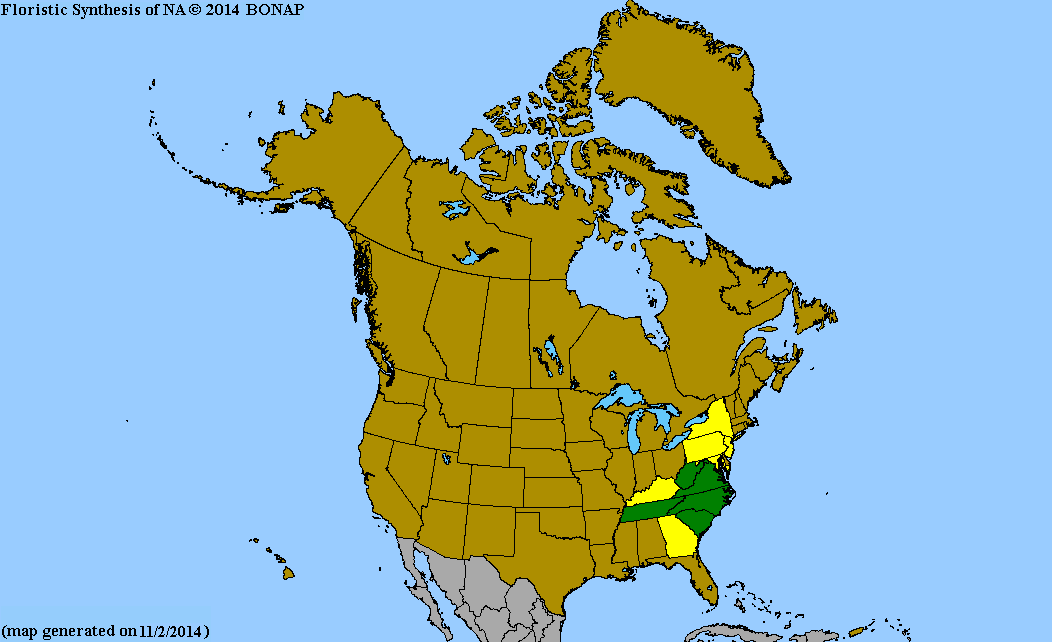
Map courtesy of The Biota of North America Program.
Map color key
Search Our Database: Enter any portion of the Scientific, Common Name, or both.
Do a general Google search of the entire site:
#ad
 Follow USWildflowers on Twitter
#ad
| | Site: GSMNP, Schoolhouse Gap Trail, Blount County, TN Date: 2016-April-20 | Photographer: Gerald C. Williamson
Nikon D7000
Tamron SP 90MM f/2.8 AF Macro | | The yellow, 6-tepaled flowers of Uvularia puberula are similar to those of Uvularia sessifolia, but a diagnostic characteristic are the styles, which are difficult to see, and not seen in this photo. The undivided portion of the styles of U. puberula are half as long to as long as the style branches, whereas in U. sessifolia the undivided part of the style is 3 to 5 times as long as the style branches (also in U. floridana) | | 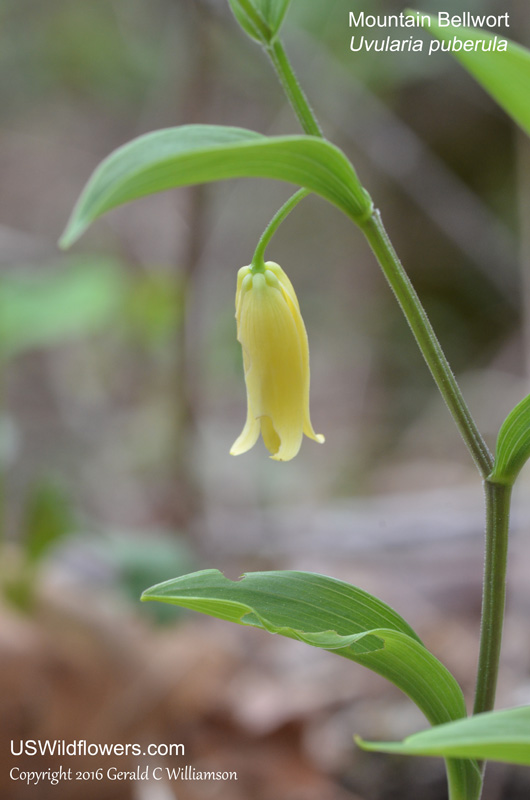
| | Site: GSMNP, Schoolhouse Gap Trail, Blount County, TN Date: 2016-April-20 | Photographer: Gerald C Williamson
Nikon D7000 | | The leaves of Mountain Bellwort are sessile to slightly clasping, as shown here. They are usually a little broader than those of Sessileleaf Bellwort (Uvularia sessilifolia.) The veins (and perhaps surface) of the underside of the leaves of U. puberula will have some hairs. Since the leaves of U. puberula var. nitida are not clasping, and the stems of that variety are glabrous (except perhaps at the nodes), you may need to look at the underside of the leaves to differentiate between U. puberula var. nitida and U. sessilifolia. If the stem is branched, U. sessilifolia may have 1 or 2 leaves below the branch, while U. puberula has only 1. | | Click on the photo for a larger image
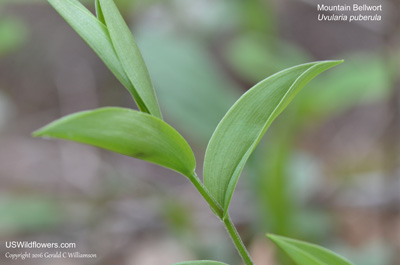
| | Site: GSMNP, Schoolhouse Gap Trail, Blount County, TN Date: 2016-April-20 | Photographer: Gerald C Williamson
Nikon D7000 | | Uvularia. puberula var. puberula the montane variety is puberulent (somewhat hairy) in lines on the ridges of the stem. Var. nitida may be hairy only at the nodes, while U. sessilifolia has a glabrous stem. Both species may have a single stem, or the stem may have 1 branch. | | Click on the photo for a larger image
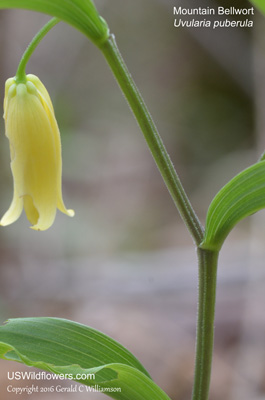
| | Site: GSMNP, Schoolhouse Gap Trail, Blount County, TN Date: 2016-April-20 | Photographer: Gerald C Williamson
Nikon D7000 | | Uvularia species have 6 tepals, a feature of all Liliaceae, although Uvularia has apparently recently been moved into the Colchicaceae (Meadow Saffron) family, another Liliale. | | Click on the photo for a larger image
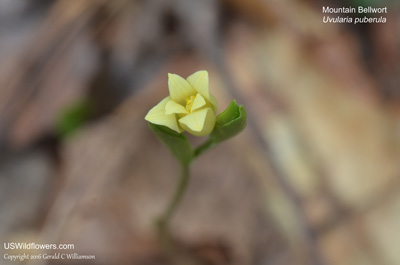
| | Site: GSMNP, Schoolhouse Gap Trail, Blount County, TN Date: 2016-April-20 | Photographer: Gerald C Williamson
Nikon D7000 | | All Uvularia species have stems sheathed with a papery bract. | | Click on the photo for a larger image
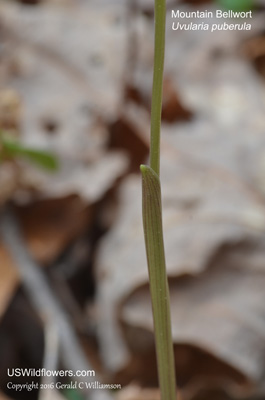
|
References used for identification and information:
|
|
| |
| #ad
|
|







